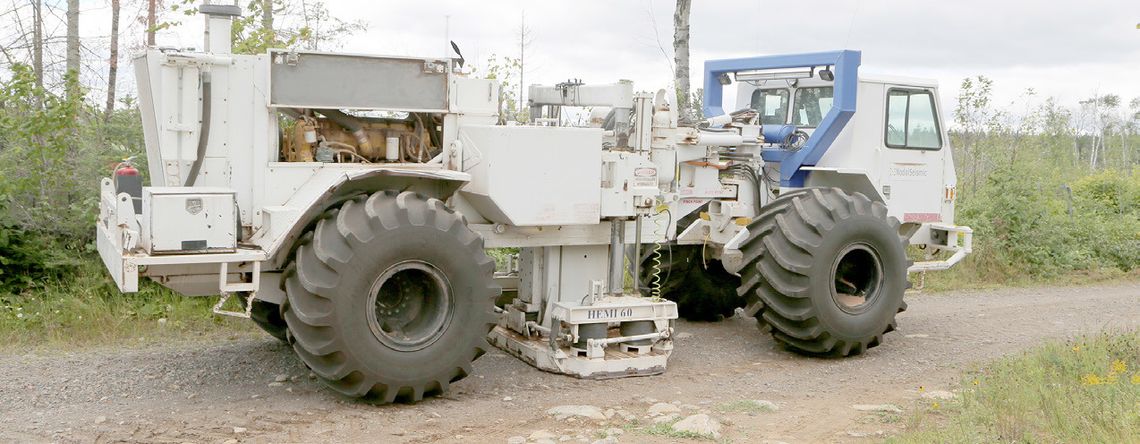The search for more helium in northeastern Minnesota is growing.
Pulsar Helium Inc., is expanding testing at a site near Babbitt to determine whether more helium exists than was found earlier this year.
Testing on a 12.7 mile-long seismic line has begun to help confirm the scale of a helium deposit believed to be world class, Pulsar Helium said in a news release.
“Acquiring new and extensive structural data will be used to assist the placement of step out appraisal wells from Jetstream #1 as we look to develop the project and move towards a production scenario as soon as practical,” Pulsar Helium said in the release. “Confidence is high as we approach the publishing of our resource estimation later this month which we expect will further underpin the extent of the Topaz project and its high prospectivity.”
Pulsar Helium found helium in a 2,200 foot-deep hole drilled in December on private land near Babbitt.
The single hole was drilled about 50 feet away from where Duluth Metals in 2011 had drilled a hole looking for copper, nickel and platinum group metals, but struck helium.
The Pulsar Helium free-flowing well was flowing at 821,000 cubic feet per day with a helium grade between 8.7 and 14.5 percent.
Pulsar Helium called the well world-class and in the top tier of global primary helium projects.
It dubbed the well Jetstream #1 and the Babbitt area project the Topaz project.
A resource estimate on the size of the deposit is expected soon.
Helium can be used in a variety of applications including computer hard drives, magnetic resonance imaging machines, vehicle air conditioning systems, semi-conductor fabrication, fiber optic cables, as a coolant in nuclear reactors, arc welding, lead detection in the hulls of ships, and high pressure equipment, according to Pulsar Helium.
It’s possible that commercial production of helium from the site could some day begin.
There’s also the possibility that some of the deposit could be beneath public lands.
To prepare for those scenarios, the 2024 Minnesota Legislature established permitting and regulatory rules for hydocarbon extraction in the state, including helium. Commercial production on public land at the site would benefit communities and schools under the legislation.
Helium is formed by the radioactive decay of elements such as uranium and thorium.
The Pulsar Helium project is located within the Duluth Complex, a large untapped area of northeastern Minnesota rich with minerals such as copper, nickel, cobalt and platinum group metals.
Another Pulsar Helium project, in Greenland, is undergoing a passive seismic survey, Pulsar Helium said.
Pulsar Helium is headquartered in British Columbia, Canada.
.jpg)











